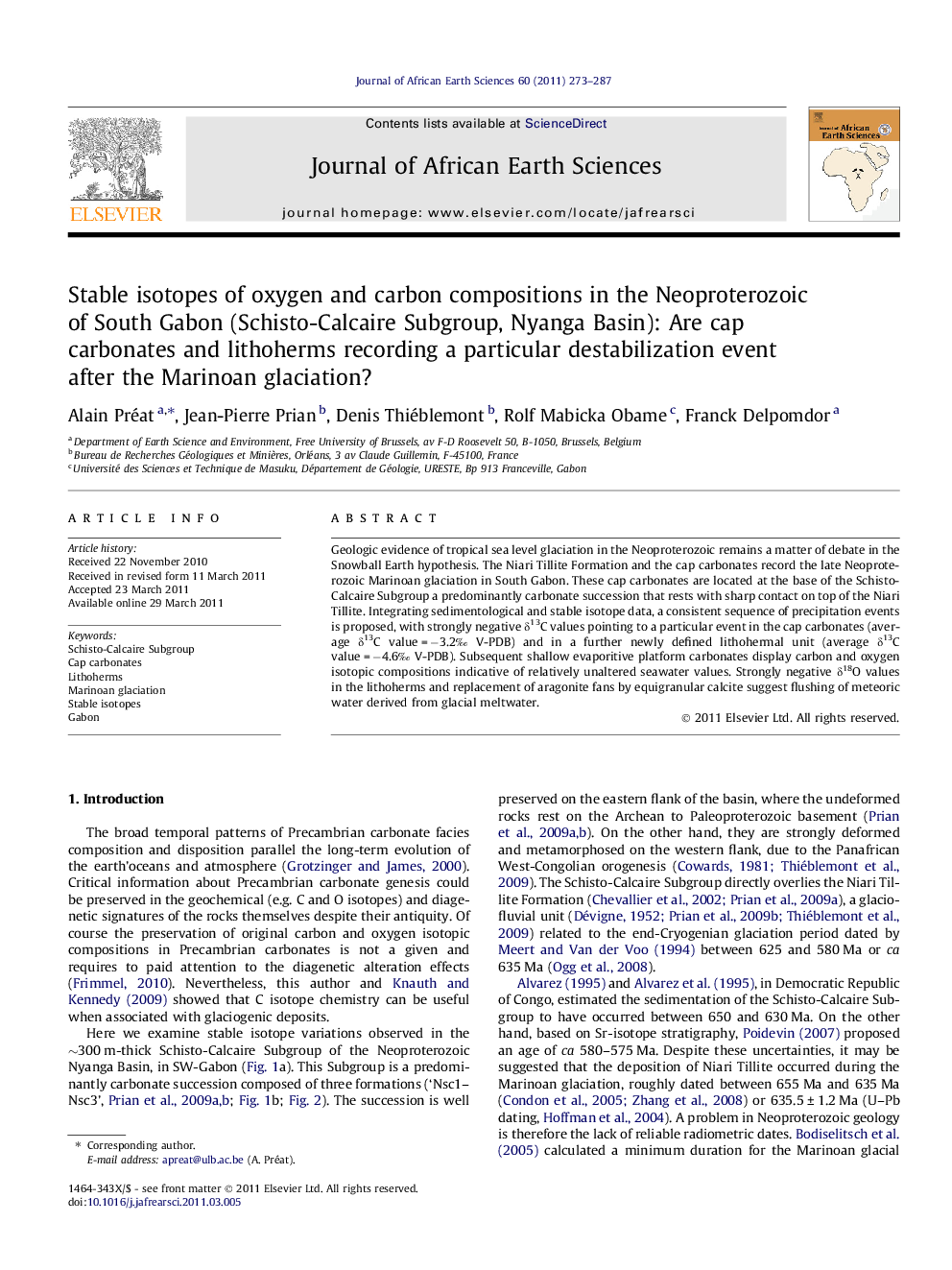| Article ID | Journal | Published Year | Pages | File Type |
|---|---|---|---|---|
| 4729175 | Journal of African Earth Sciences | 2011 | 15 Pages |
Geologic evidence of tropical sea level glaciation in the Neoproterozoic remains a matter of debate in the Snowball Earth hypothesis. The Niari Tillite Formation and the cap carbonates record the late Neoproterozoic Marinoan glaciation in South Gabon. These cap carbonates are located at the base of the Schisto-Calcaire Subgroup a predominantly carbonate succession that rests with sharp contact on top of the Niari Tillite. Integrating sedimentological and stable isotope data, a consistent sequence of precipitation events is proposed, with strongly negative δ13C values pointing to a particular event in the cap carbonates (average δ13C value = −3.2‰ V-PDB) and in a further newly defined lithohermal unit (average δ13C value = −4.6‰ V-PDB). Subsequent shallow evaporitive platform carbonates display carbon and oxygen isotopic compositions indicative of relatively unaltered seawater values. Strongly negative δ18O values in the lithoherms and replacement of aragonite fans by equigranular calcite suggest flushing of meteoric water derived from glacial meltwater.
► Lithoherms are described for the first time in the Neoproterozoic of Gabon. ► Strongly depleted δ13C values point to a methane release in the Marinoan glaciation. ► Strongly depleted δ18O values point to flushing of meteoric ground water. ► Normal seawater conditions with evaporitic sequences followed the deglaciation.
